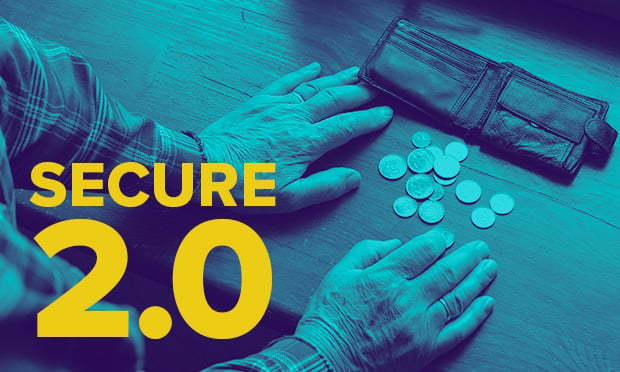A study from The Inclusive Wealth Building Initiative starkly illustrates the gulf between those employees with access to an employer-sponsored retirement plan and those who participate—and, perhaps unsurprisingly, much of that participation depends on income levels. The Initiative, a project of The Economic Innovation Group, derived its data from various surveys, including the Census Bureau's Survey of Income and Program Participation and the Bureau of Labor Statistics' National Compensation Survey. The study also used the 2019 Current Population Survey's Annual Social and Economic Supplement instead of the 2020 release, "because the 2020 survey was administered in March 2020 and likely suffered from lower response rates due to the COVID-19 pandemic," the authors wrote. The study found that 46 percent of workers nationwide have access to an employer-sponsored plan, with 15 states being below that national average. Although many of those states are mainly located in the Southeast and the South, they also include California (43.7%) and New York (41.8%). New York and California are also found among the 10 states with the lowest employer-sponsored retirement plan access for employees earning less than $50,000 a year. Florida and Texas, two more of the most populous states in the country, top the list at #1 and #2, respectively. The 10 states account for 43 percent of the country's low-wage workforce. On the other end of the spectrum, Maine and Iowa are the low-wage access leaders, at 51.7% and 49.7% respectively. However, access doesn't necessarily equal participation. The study reveals that nationwide 38 percent of respondents reported participating in their offered plans. Participation by low-wage workers was shown to be at least six percentage points lower than for overall workers, and fully 25 percentage points lower on average than the higher-wage workforce. Iowa tops the list of low-wage participation at 39.7%, while Arizona comes in last with 19.8% of low-wage workers taking part in an employer-sponsored retirement plan. The Inclusive Wealth Building Initiative says the lack of well-designed retirement savings programs plays a significant role in contributing to the gap in participation. Our slideshow above shows the top and bottom five states for employee-sponsored retirement plan access, and also provides numbers for participation as well as access and participation among low-wage workers. Click here for the full study.
Continue Reading for Free
Register and gain access to:
- Breaking benefits news and analysis, on-site and via our newsletters and custom alerts
- Educational webcasts, white papers, and ebooks from industry thought leaders
- Critical converage of the property casualty insurance and financial advisory markets on our other ALM sites, PropertyCasualty360 and ThinkAdvisor
Already have an account? Sign In Now
© 2024 ALM Global, LLC, All Rights Reserved. Request academic re-use from www.copyright.com. All other uses, submit a request to [email protected]. For more information visit Asset & Logo Licensing.








